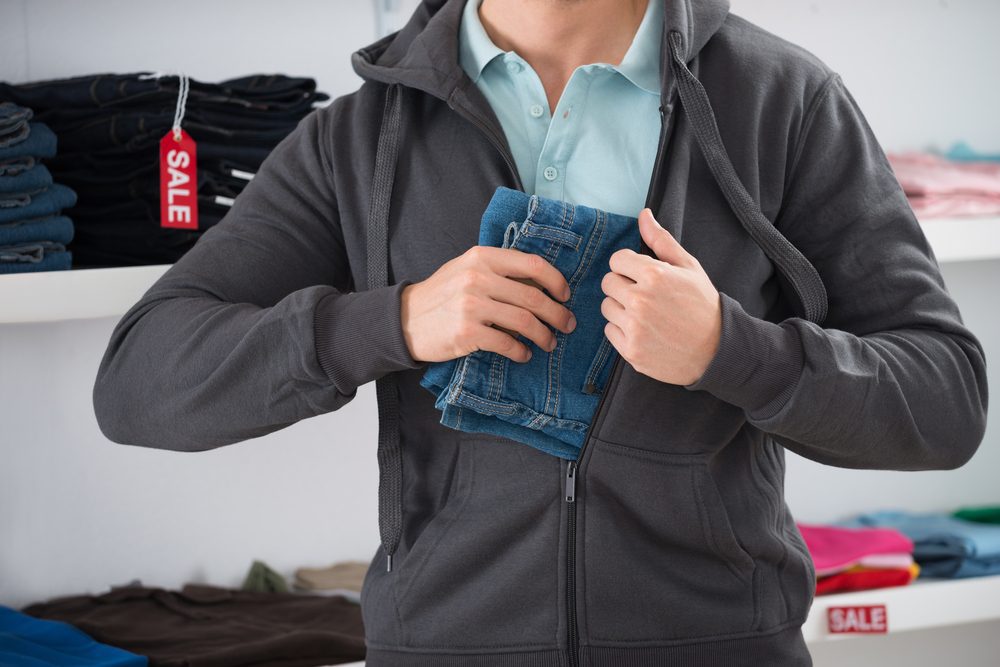Global retail shrink led to losses of $99.56 billion in calendar 2017, according to the Sensormatic Global Shrink Index compiled by Tyco Retail Solutions and PlanetRetail RNG. U.S. shrink generated losses of $42.49 billion, accounting for 1.85% of retail sales, slightly above the global average of 1.82%.
The National Retail Federation and the University of Florida also analyzed U.S. shrink trends by interviewing 63 loss prevention and asset protection professionals from a variety of retail sectors. This study found that shrink averaged 1.33% of sales in 2017, down from 1.44% the year before. A total of 59% of those surveyed said that shrink was flat or decreasing, up from 51% in 2016. In comparison, 41% of respondents claimed shrink was growing, down from 49%.
The Sensormatic report surveyed 1,120 professionals from retailers in 14 countries that collectively operate more than 229,000 stores. Shrink rates in the U.S. varied by retail sector, with the highest level, 2.43%, experienced by fashion and accessories stores. Other U.S. retail segments with high levels of shrink included:
- Convenience Stores: 2.05%;
- Home, Garden and Auto Stores: 2.05%;
- Drug Stores, Pharmacies and Perfumeries: 2.03%; and
- Variety Stores: 1.95%.
“Fashion merchandise is always in high demand and items are usually relatively higher priced, which means a bigger lure for criminals and ultimately a greater loss for retailers when stolen,” said Kim Warne, VP of Marketing and CMO at Tyco Retail Solutions. “Loss due to the shrink in fashion and accessory stores amounts to $4.12 billion globally.”
U.S. convenience stores and supermarkets also suffer from high shrink rates due to a combination of the products they stock, typical store layouts and the hours they are open, according to Warne. These stores are designed for on-the-go shopping and often operate at night, which makes them more susceptible to “grab and go” theft or armed robbery.
“Compared to other countries, the U.S. encounters unique challenges in hypermarkets and supermarkets, such as easy access to items and simple in-and-out exits which shoplifters and organized retail crime gangs can exploit,” said Warne. “These types of stores carry some of the top stolen items – such as meats, cosmetics, personal care (razor blades), baby formula, laundry detergent, over-the-counter medications and, depending on their location, wines and spirits – that consumers need quickly and conveniently.”
She suggested using video surveillance as the foundation for loss prevention and enhancing the system with tools such as fire and intrusion security systems and remote monitoring. Additionally, EAS labels and tags, cart containment systems and RFID can help retailers analyze what is being taken and develop additional safeguards against loss. The newest tool for foiling criminals is monitoring social media to “eavesdrop” on plans for theft.
A Multi-Solution Approach Offers The Most Effective Prevention
Shoplifting is the single largest cause of shrink in the U.S., accounting for 35.55% of losses. Warne suggested that retailers should take a layered technology approach when designing their loss prevention programs:
- Video Surveillance And Analytics: This traditional method provides real-time monitoring that is particularly important in high-value, high-risk areas such as stockrooms, loading areas and sales floors. Video analytics have already been adopted by 84.31% of surveyed retailers.
- Electronic Article Surveillance (EAS): This technology offers features like concealed detection and solutions that enable mobile and self-checkout, and is already used by 92.16% of retailers.
- Monitored Services: Programs for intrusion and fire detection can protect both people and property, and 90.2% of retailers use some form of alarm monitoring.
- RFID-based Inventory Intelligence: RFID provides item-level visibility and accuracy for omnichannel fulfillment. It also is useful for helping retailers see what needs replenishment, and 76.47% of retailers take advantage of the technology.
- Traffic Counting and Insights: These solutions enable retailers to align proper staffing to the number of shoppers in the store, which both provides better customer service and reduces theft. Data mining in general, which includes insights gleaned from POS checkout data and removed EAS tags, is in use at 83.33% of retailers.
Retailers also can use social media monitoring as a tool to reduce theft. Some organized retail crime groups use social media platforms to discuss their plans, but only 49.02% of U.S. retailers reported using social media monitoring as part of their loss prevention strategy.
“To best use social media to prevent theft, retailers can tailor their keyword searches to their specific loss prevention needs, to eliminate conversations that don’t apply to their business,” said Warne. “This allows retailers to more effectively identify risky conversations, to identify a potential theft event and prepare store staff and law enforcement ahead of an incident.”
Retailers also need to be aware of internal theft, which accounts for 24.54% of losses due to shrink. Video surveillance is a strong deterrent, and exception-based reporting systems at the POS can flag potentially fraudulent transactions, but strong hiring practices also are an important part of the overall strategy.
“First, before a hire is made, retailers should conduct a thorough background screening on all potential candidates,” said Warne. “Once hired, it’s important to connect and build a rapport with all employees to create a comfortable work environment where they hopefully feel less inclined to steal and are more likely to care about their career.”













